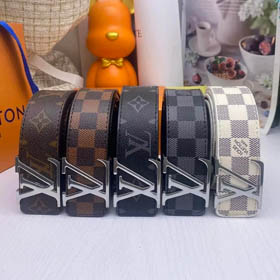Gucci: A Legacy of Italian Luxury and Style
2025-04-06
Gucci: A Legacy of Italian Luxury and Style
Gucci, an emblem of Italian craftsmanship, luxury, and style, has a storied history that spans nearly a century. Its journey is a fascinating tale of innovation, resilience, and a commitment to quality.
The story of Gucci begins in 1921 when Guccio Gucci founded the brand in Florence, Italy. Guccio, who had previously worked at the Savoy Hotel in London, was inspired by the elegance and sophistication of British luxury goods. He returned to Florence with a vision to create a brand that combined Italian craftsmanship with the refined tastes of international clientele. Initially, Gucci focused on producing high - quality leather goods, such as handbags, luggage, and accessories. The brand's early products were characterized by their fine materials, meticulous craftsmanship, and understated elegance.
One of the defining moments in Gucci's history came in the 1930s when Guccio Gucci introduced the bamboo handle for handbags. The use of bamboo was a result of wartime restrictions on metal, but it became an iconic design element. The bamboo handle added a touch of elegance and uniqueness to the bags, and it remains a signature feature of Gucci products to this day.
In the 1950s and 1960s, Gucci experienced a period of rapid growth and international acclaim. The brand became a favorite among celebrities, socialites, and fashion - conscious consumers around the world. In 1953, Guccio Gucci passed away, but his sons Aldo, Vasco, Ugo, and Rodolfo continued to expand the business. Aldo, in particular, played a crucial role in the brand's international expansion. He opened Gucci stores in major cities such as New York, London, and Paris, introducing the brand to a global audience.
During this time, Gucci also introduced some of its most iconic designs. The GG logo, which stands for Guccio Gucci, was introduced in the 1960s. The logo, a double - G interlocking pattern, became a symbol of luxury and status. It was featured on a wide range of products, from handbags and wallets to clothing and accessories. Another iconic design was the Gucci loafers, which were first introduced in the 1950s. The loafers, with their signature horsebit detail, became a classic men's shoe and were later adapted for women as well.
The 1970s and 1980s were a period of continued growth and diversification for Gucci. The brand expanded its product range to include clothing, fragrances, and jewelry. Gucci's clothing collections were known for their bold colors, luxurious fabrics, and Italian - inspired designs. The brand's fragrances, such as Gucci No. 1 and Envy, were also well - received by consumers.
However, in the 1990s, Gucci faced some challenges. The brand had become overly commercialized, and its image had suffered. In 1994, Tom Ford was appointed as the creative director of Gucci. Ford revitalized the brand with his bold and provocative designs. He introduced a new sense of sexuality and modernity to Gucci's collections. His designs featured tight - fitting clothing, bold prints, and high - quality materials. Under Ford's leadership, Gucci became a leading fashion brand once again.
In 2004, Ford left Gucci, and the brand continued to evolve under different creative directors. Today, Gucci is one of the most valuable and recognizable luxury brands in the world. Its products are sold in stores around the globe, and it continues to be a favorite among celebrities, fashion influencers, and consumers who appreciate luxury and style.
For more information about Gucci and to explore its latest collections, visit https://hoobuy.asia/。



















